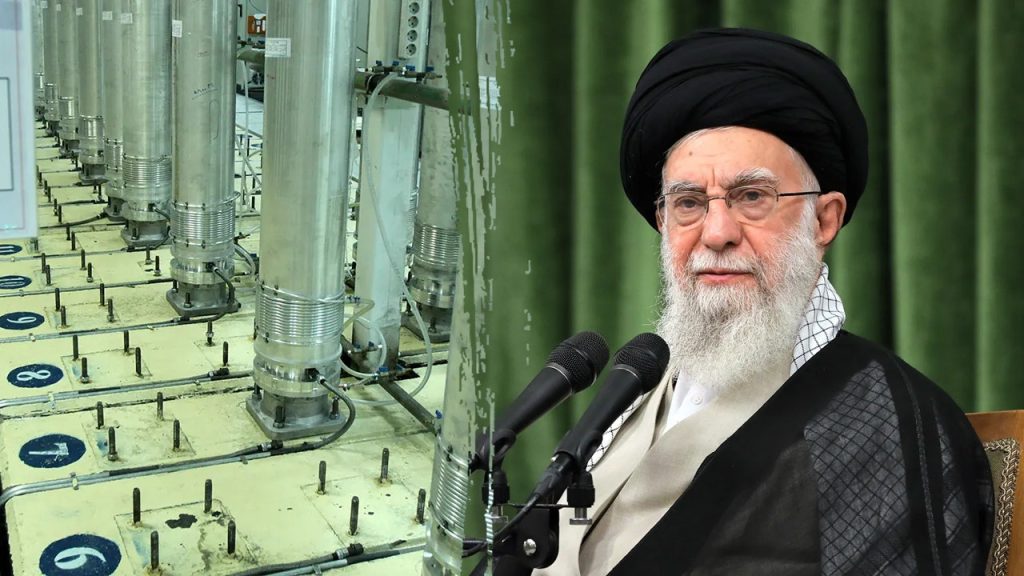The Islamic Republic of Iran continues its clandestine pursuit of nuclear weapons capability, not only by amassing near-weapons-grade enriched uranium but also by covertly advancing its weaponization program. Information obtained by the National Council of Resistance of Iran (NCRI), an opposition group, reveals renewed efforts by Tehran to develop nuclear detonation capabilities. Central to this program is METFAZ (Center for Research and Expansion of Technologies on Explosions and Impact), an organization overseeing the weaponization efforts, with renewed activities at the previously dormant Sanjarian site raising significant concerns. This clandestine activity is masked by commercial fronts to evade international sanctions. The NCRI warns that METFAZ’s intensified activity focuses primarily on nuclear bomb detonation, the crucial trigger mechanism for a nuclear explosion. Sanjarian, once a pivotal site under the Amad Plan (Iran’s clandestine nuclear weapons program), saw renewed activity in late 2020 after years of dormancy, initially disguised by the regime as a film set, and subsequently obfuscated by planted trees and a security gate to thwart satellite surveillance.
The Sanjarian site, located near Tehran, has witnessed increased visits from top nuclear experts since April 2024. These experts operate under the guise of Arvin Kimia Abzaar, a purported oil and gas company, a sector frequently used by Iran to conceal its nuclear activities. Saeed Borji, a long-time member of the Islamic Revolutionary Guard Corps (IRGC) and head of METFAZ, is identified as an executive of Arvin Kimia Abzaar, further solidifying the connection between the front company and the nuclear weapons program. METFAZ, operating under the Organization of Defensive Innovation and Research (SPND), the entity spearheading Iran’s nuclear development, is suspected of conducting research on exploding bridgewire (EBW) detonators at the Sanjarian site.
Iran has a history of concealing its EBW detonator program, essential for nuclear warhead deployment, under the guise of oil industry activities. The International Atomic Energy Agency (IAEA) noted in a 2015 report that Iran’s detonator development was integral to its nuclear explosive device program. Iran’s attempts to attribute the program to aerospace safety and later to oil and gas exploration were deemed inconsistent and deceptive by the IAEA. Despite claims of industrial applications, the IAEA concluded that the detonators developed by Iran possessed characteristics consistent with a nuclear explosive device. The NCRI criticizes Iran’s deceptive tactics of obfuscation and delay in dealing with the IAEA, enabling them to advance their nuclear weapons program without accountability. The current status of Iran’s detonator research remains unclear, and the IAEA has not responded to the NCRI’s latest findings.
The NCRI emphasizes the lack of scrutiny on Iran’s weaponization program while the international community focuses on uranium enrichment levels. They allege that METFAZ has also expanded its Plan 6 complex at the Parchin military site, another key location for explosive tests and production, a site that has never been inspected by the IAEA. Parchin was targeted by Israeli airstrikes in October 2024, resulting in the destruction of multiple buildings, including a high explosive test chamber. The NCRI underscores the challenges posed by Iran’s layered approach to its nuclear program, utilizing front companies, deceptive operations, and strategic ambiguity, making tracking their activities difficult even for specialized agencies like the IAEA. This complex network of deception hinders verification efforts and raises concerns about Iran’s true intentions regarding its nuclear capabilities.
Iran’s consistent use of deceptive tactics and lack of transparency, according to the NCRI, demonstrates a clear intention to develop nuclear weapons, bypassing international scrutiny. The organization emphasizes the urgent need for increased vigilance and proactive measures by the international community to address Iran’s clandestine nuclear weaponization efforts. The NCRI’s revelation of Iran’s clandestine nuclear weaponization program through front companies and resurrected research facilities highlights a critical security concern demanding immediate international attention. The report urges greater scrutiny on Iran’s weaponization efforts, moving beyond a focus solely on uranium enrichment.
The IAEA’s lack of access to key sites like Sanjarian and Parchin further compounds the challenge of verifying Iran’s claims and underscores the need for greater international pressure to ensure transparency and compliance with non-proliferation agreements. The NCRI’s findings highlight the urgent need for a comprehensive international response to Iran’s clandestine nuclear activities. This includes stricter monitoring and verification measures, increased pressure on Iran to cooperate fully with the IAEA, and a renewed commitment to preventing the proliferation of nuclear weapons in the region. The intelligence provided by the NCRI offers a crucial window into the secretive world of Iran’s nuclear ambitions and serves as a stark warning against complacency in the face of this growing threat.

